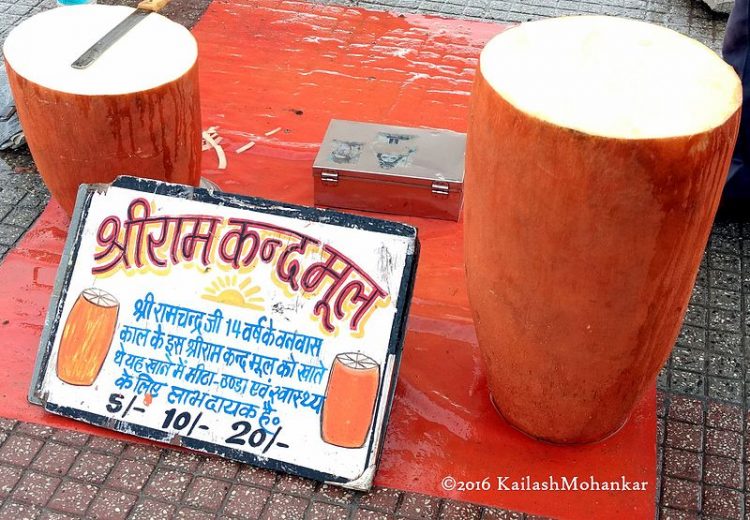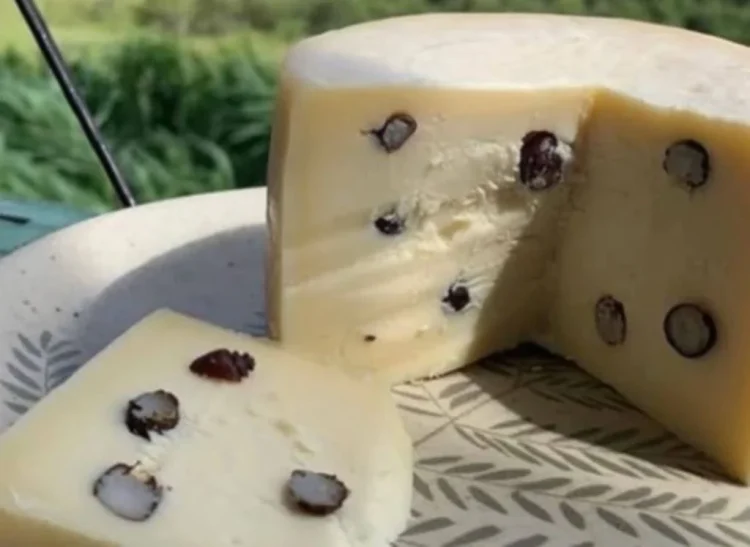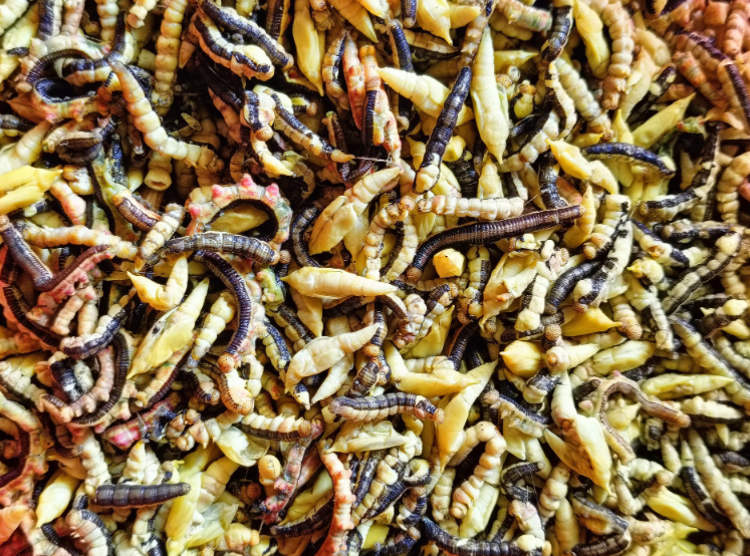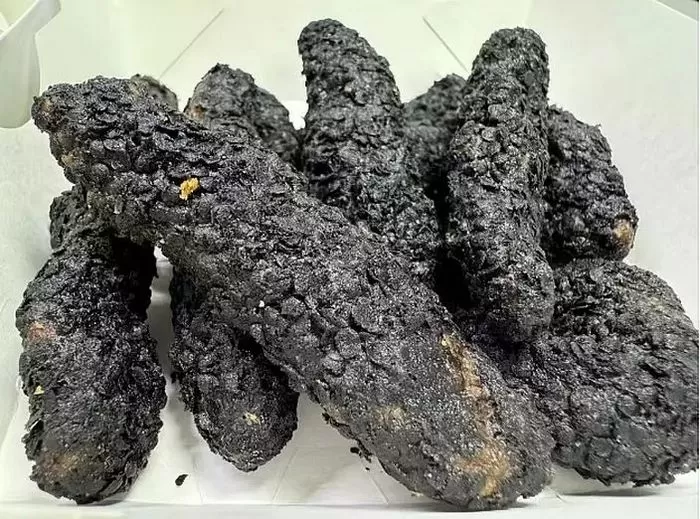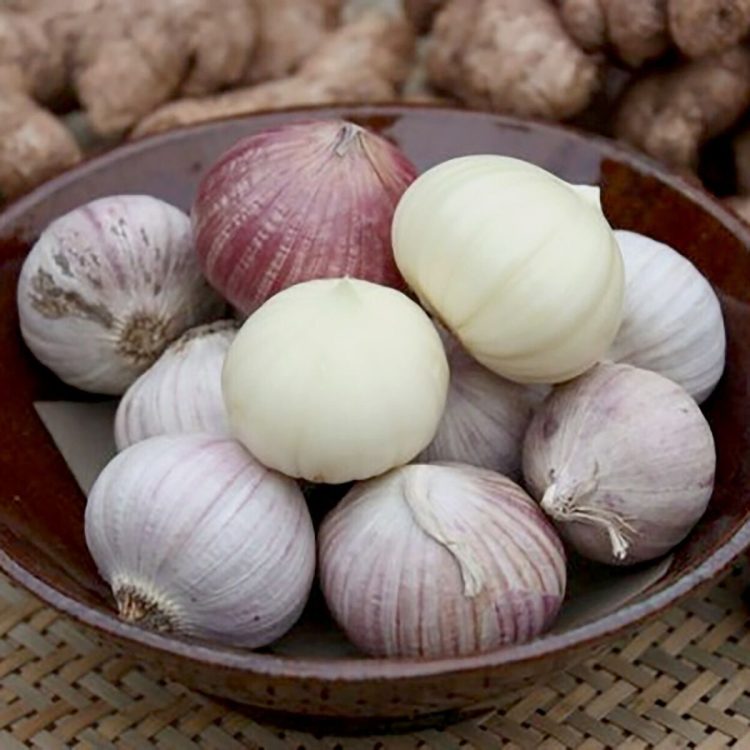Ram Kand Mool, a drum-shaped tuber that has been sold as a hearty snack on Indian street corners for at least several decades remains a mystery to scientists, as no one can figure out what plant produces it.
Indian botanists developed an interest in ram kand mool in the 1980s, after trying and failing to find out the origins of the almost paper-thin snacks cut out of giant reddish tubers by street vendors. None of them were willing to reveal the plant that produced it, and those that did gave conflicting answers. Some claimed that it was a root, others that it was the stem of a plant, but most either refused to answer or claimed that they bought the tubers from third parties and genuinely didn’t know the source. Stranger still was the fact that not even science could provide a clear answer to the botanists’ questions.
Ram kand mool is often advertised as the only food source of Lord Ram when he was exiled to forests along with his wife Sita and brother Lakshman, and vendors claim it can cool you down during the summer, quench both hunger and thirst, and provide all sorts of medicinal relief. It is served with all sorts of seasonings, from chili and salt, to lime and sugar. It’s cut and served as very thin slices out of tubers that can reportedly weigh up to 300 kilograms.
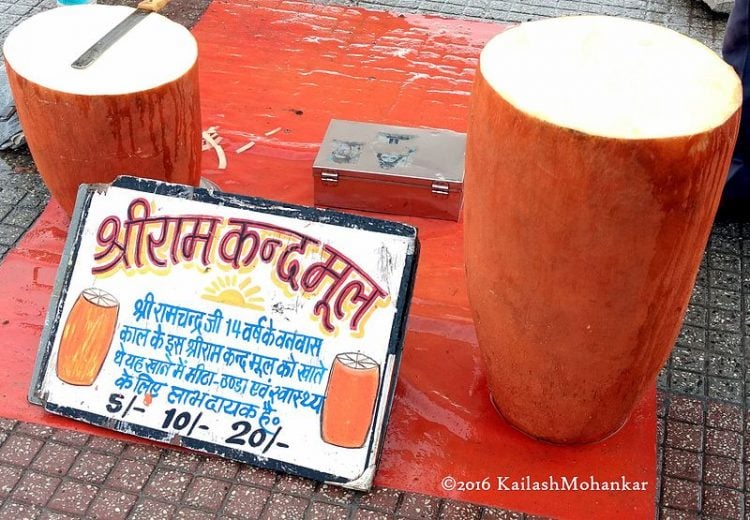
Photo: Kailash Mohankar/Wikimedia Commons
Writing for Atlas Obscura, Indian journalist and food blogger Bartha Kumari tackled the mystery that is ram kand mool, from the early attempts of botanists to reveal its source, to present day. Apparently, they only started making some headway in 1994, when intrigued ethnobotanist Dr. Koppula Hemadri started going around India digging out roots in an attempt to finally solve the enigma of ram kand mool. His search ended with agave, but he himself admitted that he did not find irrefutable proof that this was the right answer.
At around the same time that Dr. Hemadri was conducting his research, botanist Dr. Ali Moulali tried paying a ram kand mool vendor Rs1,000-2,000 to reveal the source of the snack. After hesitating, the man said that it was the base of Kitta Nara, the name used to describe agave fiber. Interestingly, he added that it wasn’t the root, but something that grew above ground.
A real breakthrough in the botanists’ quest to solve the mystery of ram kand mool came in 2010, when a team of scientists conducted DNA tests on a slice of tuber, which revealed that it matched the DNA of agave by 89 percent. Whatever evidence had been gathered until then pointed at agave, and the more scientists thought about it, the more sense it made. Agave contains lots of alkaloids, so it’s poisonous in large quantities, and that may be why vendors only sell it in thin slices.
In 2011, narrowed down the source of ram kand mool to Agave Sisalana, one of several species of agave, by chopping off the leaves to reveal a large, white tuber-like stem similar to that sold by street vendors. A paper on this significant finding was published in the Current Science journal that same year. Only that is not the end of the story…
Because there are several species of agave, some very similar to each other, scientists can’t figure out exactly what the source of the popular street snack is. It could be Sislana or Americana, or some other foreign species.
“We can’t conclude until the vendors show the plant to us. They keep this as a business secret to create curiosity around it,” Dr. Vinod B. Shimpale, co-author of the aforementioned 2011 study, admits.
Some scientists aren’t even convinced that the tubers are from the agave plant. Dr. Chenna Kesava Reddy Sangati, an assistant professor of nutrition & technology in Bengaluru, who has studied agave extensively, is sure that ram kand mool is not made from agave. He claims the alleged source of the snack is highly sweet, astringent, fibrous, and hard to bite, whereas the snack itself “has a smoother mouthfeel, is softer to bite, and is not very sweet”. Something doesn’t add up.
Wikipedia describes the root of the shrub Maerua oblongifolia as the source of the ram kand mool snack, but acknowledges that “the root is brought to the shops in a very secretive manner, in that where it is either collected or obtained is kept secret,” and that “there are doubts amongst botanists as to whether the described plant is Maerua oblongifolia”. In short, no one actually knows.
Keeping the source of ram kand mool a secret is a key characteristic of the business. Forest officials in Maharashtra have tried spying on vendors, to no avail, buying the product in bulk is never accepted, and revealing any sort of real information or contact information regarding the source of the tubers is considered taboo.
“Ask anything but this, please. Nobody will tell you anything. This is how this business is,” one vendor told Bartha Kumari when she asked him to reveal his ram kand mool source.

